

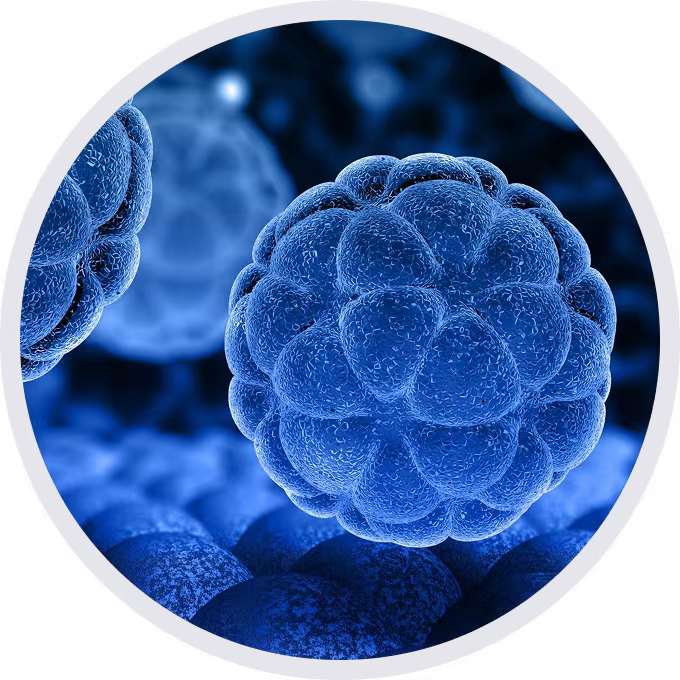
• 310791

| Product name | B-hCLDN18.2 A549 |
|---|---|
| Catalog number | 310791 |
| Aliases | OASFTA5, SFTPJ |
| Tissue | Lung |
| Disease | Carcinoma |
| Species | Human |
| Application | B-hCLDN18.2 A549 cells have the capability to establish tumors in vivo and can be used for efficacy studies. |
on this page
The human CLDN18.2 coding sequence was inserted into the AAVS1 locus in A549 cells. Human CLDN18.2 is highly expressed on the surface of B-hCLDN18.2 A549 cells.
Gene targeting strategy for B-hCLDN18.2 A549 cells. The exogenous promoter and human CLDN18.2 coding sequence was inserted into the AAVS1 locus wild-type A549.
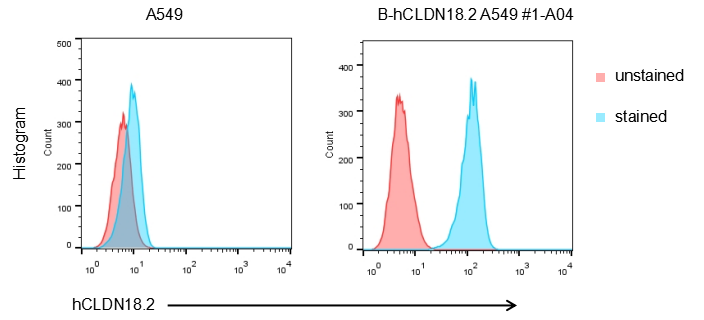
CLDN18.2 expression analysis in B-hCLDN18.2 A549 cells by flow cytometry. Single cell suspensions from wild-type A549 and B-hCLDN18.2 A549 cultures were stained with species-specific anti-CLDN18.2 antibody. Human CLDN18.2 was detected on the surface of B-hCLDN18.2 A549 cells, but not on the surface of wild-type A549 cells. The 1-A04 clone of B-hCLDN18.2 A549 cells was used for in vivo experiments.
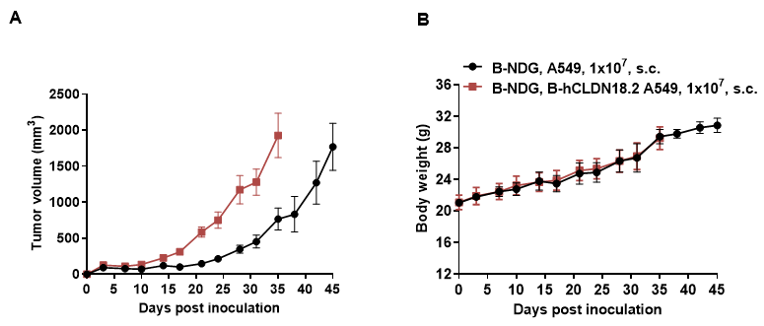
Subcutaneous homograft tumor growth of B-hCLDN18.2 A549 cells. B-hCLDN18.2 A549 cells (1x107) and wild-type A549 cells (1x107) were subcutaneously implanted into B-NDG mice (female, n=5). Tumor volume and body weight were measured twice a week. (A) Average tumor volume ± SEM. (B) Body weight (Mean ± SEM). Volume was expressed in mm3 using the formula: V=0.5 × long diameter × short diameter2. As shown in panel A, B-hCLDN18.2 A549 cells were able to establish tumors in vivo and can be used for efficacy studies.
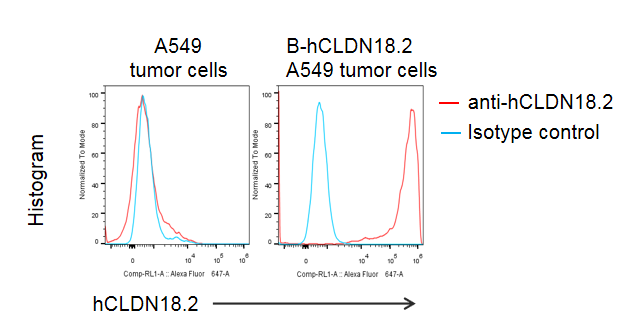
B-hCLDN18.2 A549 cells (1x107) and wild-type A549 cells (1x107) were subcutaneously transplanted into B-NDG mice (n=5), tumor cells were harvested and assessed for human CLDN18.2 expression by flow cytometry. As shown, human CLDN18.2 was highly expressed on the surface of B-hCLDN18.2 A549 tumor cells. Therefore, B-hCLDN18.2 A549 cells can be used for in vivo efficacy studies of novel CLDN18.2 therapeutics.
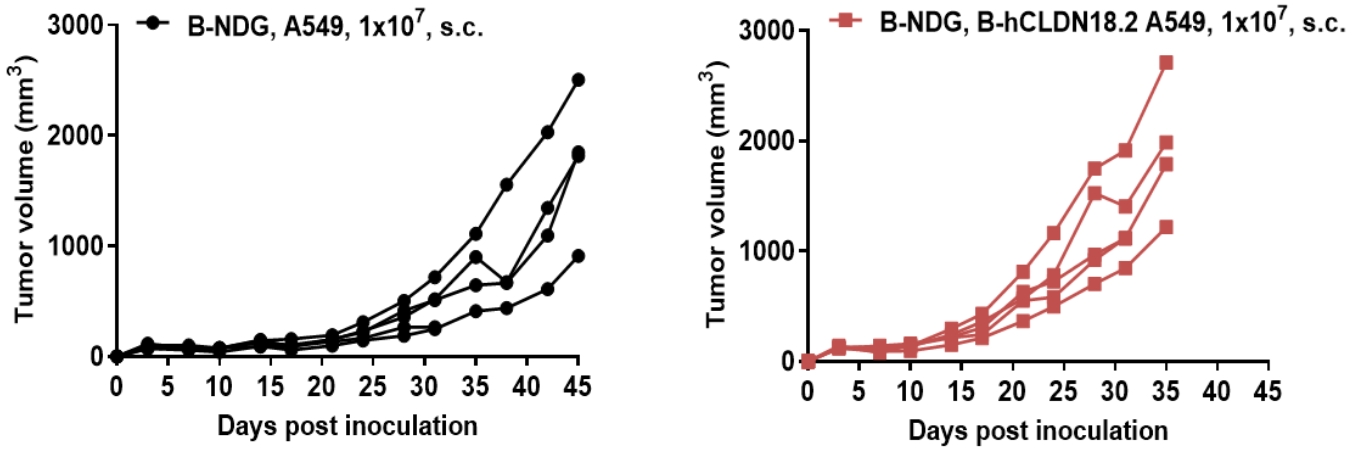
B-hCLDN18.2 A549 tumor cells growth of individual mice. B-hCLDN18.2 A549 cells (1x107) and wild-type A549 cells (1x107) were subcutaneously implanted into B-NDG mice (female, n=5). As shown in panel, B-hCLDN18.2 A549 cells were able to establish tumors in vivo and can be used for efficacy studies.
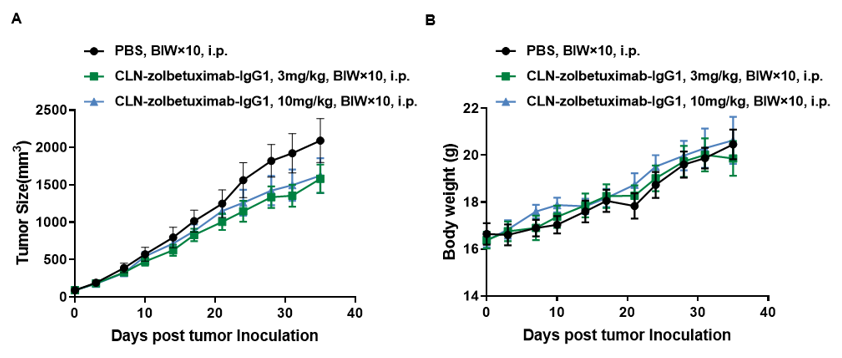
Antitumor activity of anti-hCLDN18.2 antibodies in CB-17 SCID mice . (A) Anti hCLDN18.2 antibody slightly inhibited A549-hCLDN18.2 tumor growth in CB-17 SCID mice. B-CAG-hCLDN18.2 A549 cells were subcutaneously implanted into CB-17 SCID mice (female, 7 week-old, n=5). Mice were grouped when tumor volume reached approximately 90 mm3, at which time they were treated with anti-hCLDN18.2 antibody with different doses and schedules indicated in panel (B) Body weight changes during treatment. As shown in panel A, anti-hCLDN18.2 antibody was efficacious but mild, demonstrating that B-CAG-hCLDN18.2 A549 cells can be used to establish tumor model and provide a powerful preclinical model for in vivo evaluation of anti-hCLDN18.2 antibodies. Values are expressed as mean ± SEM.